Hungaria is a relatively small asteroid orbiting in the inner asteroid belt. It is an E-type (high-albedo) asteroid. It is the namesake of the Hungaria asteroids, which orbit the Sun on the inside of the 1:4 Kirkwood gap, standing out of the core of the asteroid belt.

Gusztáv Sebes was a Hungarian footballer and coach. With the title of Deputy Minister of Sport, he coached the Hungarian team known as the Mighty Magyars in the 1950s. Among the players in the team were Ferenc Puskás, Zoltán Czibor, Sándor Kocsis, József Bozsik, and Nándor Hidegkuti. Together with Béla Guttmann and Márton Bukovi, he formed a triumvirate of radical Hungarian coaches who pioneered the 4-2-4 formation.
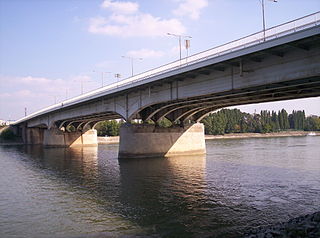
Árpád Bridge or Árpád híd is a bridge in Budapest, Hungary, connecting northern Buda (Óbuda) and Pest across the Danube.
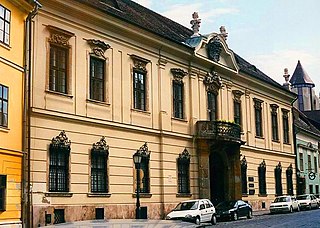
Budapest has long been an important part of the music of Hungary. Its music history has included the composers Franz Liszt, Ernő Dohnányi, Zoltán Kodály and Béla Bartók and the opera composer Ferenc Erkel.
The Nemzeti Bajnokság, also known as NB I, is the top flight of Hungarian football league system. The league is officially named OTP Bank Liga after its title sponsor, OTP Bank. UEFA currently ranks the league 28th in Europe.

Zoltán Czibor was a Hungarian footballer who played for several Hungarian clubs, including Ferencváros and Budapest Honvéd, and the Hungary national team before joining CF Barcelona. Czibor played as a left-winger or striker and was notable for having a powerful shot, good pace and excellent ball control. During the 1950s he was part of the Magical Magyars, reaching the World Cup final with them in 1954. After the 1956 Hungarian Revolution he moved to Spain where he became a prominent member of the successful FC Barcelona team of the late 1950s. After three seasons at Barcelona, he joined their local rivals Español for the 1961–62 season. After brief spells at FC Basel, Austria Wien and Primo Hamilton FC, he retired as a professional footballer and returned to Hungary. He died there in 1997, aged 68.
Attila Abonyi was a soccer manager and player. Born in Hungary, he played for the Australia national team.
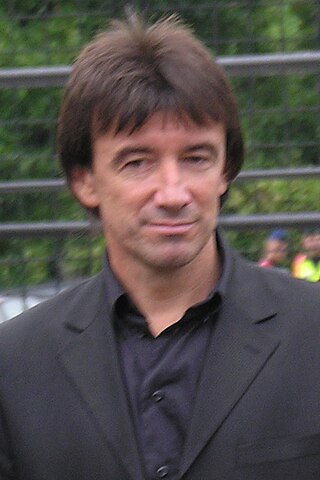
Béla Illés is a retired Hungarian football player who has spent most of his career playing for MTK Hungária FC. He is considered to be the greatest Hungarian footballer of the 1990s.
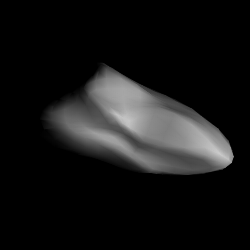
3103 Eger is an Apollo and Mars-crosser asteroid that was discovered in 1982, by Miklós Lovas. It was named after the city of Eger, Hungary. It has an albedo of 0.64, making it a highly reflective asteroid.
The Hungaria asteroids, also known as the Hungaria group, are a dynamical group of asteroids in the asteroid belt which orbit the Sun with a semi-major axis between 1.78 and 2.00 astronomical units (AU). They are the innermost dense concentration of asteroids in the Solar System—the near-Earth asteroids are much more sparse—and derive their name from their largest member 434 Hungaria. The Hungaria group includes the Hungaria family, a collisional asteroid family which dominates its population.
Pannonia was a province of the Roman Empire.

Ferenc Sipos was a Hungarian footballer and trainer.

Franz Liszt wrote his symphonic poem Hungaria in 1854, basing it partly on the Heroic March in the Hungarian Style for piano which he wrote in 1840. It was premiered under Liszt's baton at the Hungarian National Theater in Budapest on September 8, 1856, where it achieved an enormous success. "There was better than applause," the composer later wrote. "All wept, both men and women!" He was reminded with that scene of the proverb that "tears are the joy of the Hungarians."

The tram network of Budapest is part of the mass transit system of Budapest, the capital city of Hungary. The tram lines serve as the second most important backbone of the transit system, carrying almost 100 million more passengers annually than the Budapest Metro.

Hungária körgyűrű is the longest and busiest boulevard, also the widest city street in Budapest, Hungary. It's 13 km long and has 6-10 traffic lanes with a rapid tram line on the median of the boulevard. It consists of three parts: Róbert Károly körút, Hungária körút and Könyves Kálmán körút.
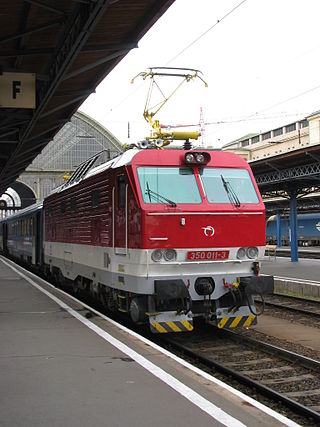
Hungaria is a EuroCity train which runs between Budapest Nyugati and Hamburg - Altona, currently running with coaches of MÁV. It is numbered as EC 252-253 and runs daily, mainly with MÁV owned rolling stocks.
Ferenc Nyúl was a Hungarian football player and coach.
The 1932–33 Magyar Kupa was the 15th season of Hungary's annual knock-out cup football competition.
The 1931–32 Magyar Kupa was the 14th season of Hungary's annual knock-out cup football competition.
The 1921–22 Magyar Kupa was the 6th season of Hungary's annual knock-out cup football competition.
This page is based on this
Wikipedia article Text is available under the
CC BY-SA 4.0 license; additional terms may apply.
Images, videos and audio are available under their respective licenses.










